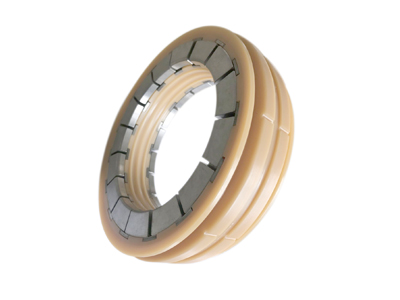What Are Seals Used for?
- 16 Mar, 2023
- 2351 views
High pressure seals are typically used to restrict fluids at pressures above 5,000 psi. At these pressures, standard energized polyurethane lip seals and U-cup seals work without special provisions. Above them, a special seal of some kind is required.
To be effective, seals must perform three basic functions. They must.
Seal – The sealing element must fit tightly enough to the microscopic irregularities of the mating surfaces (e.g. rod to seal groove and/or piston groove to cylinder bore) to prevent the penetration or passage of pressurized fluids.
Adjusting for clearance variations – the seal must be sufficiently flexible to accommodate variations in the distance between the mating surfaces during cylinder travel. The gap will change in size due to changes in the roundness and diameter of the cylindrical part. The gap can also change size in response to lateral loads. As the gap size changes, the sealing components must match the dimensional change to maintain the compressive sealing force against the adjacent mating surfaces.

Large Gap Ultra-High-Pressure Sealing Components (Type C)
Resistance to compression – The seal must be able to resist the shear forces generated by the pressure differential between the pressurized and non-pressurized sides of the seal. These shear forces attempt to push the elastomeric seal into the gap between adjacent metal surfaces. The seal must be strong and stiff enough to prevent deformation from entering the gap and damaging or destroying it.
Higher pressures improve sealing
Elastomeric materials must also seal while accommodating dimensional changes caused by manufacturing tolerances, lateral loads and cylinder deformation under pressure. Understand that in general the seal will improve with increasing fluid pressure. The system pressure on the sealing surface attempts to compress the seal axially. This compression forces the seal more tightly into the gland and helps to improve the high pressure seal’s consistency with the metal surfaces it contacts.
If the gap increases during the stroke, the elasticity of the compressed elastomeric seal expands radially and maintains the sealing force against the metal surface. As the gap increases, system pressure combines with the seal’s elasticity to increase the compressive sealing force. In general, if the high pressure seal design is correct, the sealing force and resulting sealing effect increases as the system pressure increases.

Large Gap Ultra-High-Pressure Sealing Components (Type CD)
The internal shear stresses in the seal increase as the system pressure increases. As the pressure increases, the stresses eventually exceed the physical limits of the sealing elastomer and squeeze into the gap. The difficulty posed by high pressure is not primarily a sealing problem, but rather a problem of keeping the seal in its gland while maintaining its structural integrity, as the increased system pressure forces the high pressure seal into the gap.
Seal squeeze
The ability of a seal to resist extrusion into a gap depends on the interaction of.
-the operating pressure of the system.
-the operating temperature of the system.
-the size and type of clearance, -the seal material, and
-seal material, and
-seal design.
System operating temperature is particularly important in high pressure applications, as most elastomers soften and lose their ability to resist extrusion at higher temperatures. Some design approaches to help reduce high system temperatures include using low friction materials, increasing fluid volume and reducing the circulation rate of the system. However, when ambient temperatures are high and operating conditions are extreme, system temperatures may exceed design parameters. In such cases, it is often necessary to upgrade high pressure seals and make the anti-extrusion device more resistant to high temperatures.
If you want to get more information about the types of sealing, welcome to contact us today or request a quote.
- Category:
- Arts & Culture
- No comments



